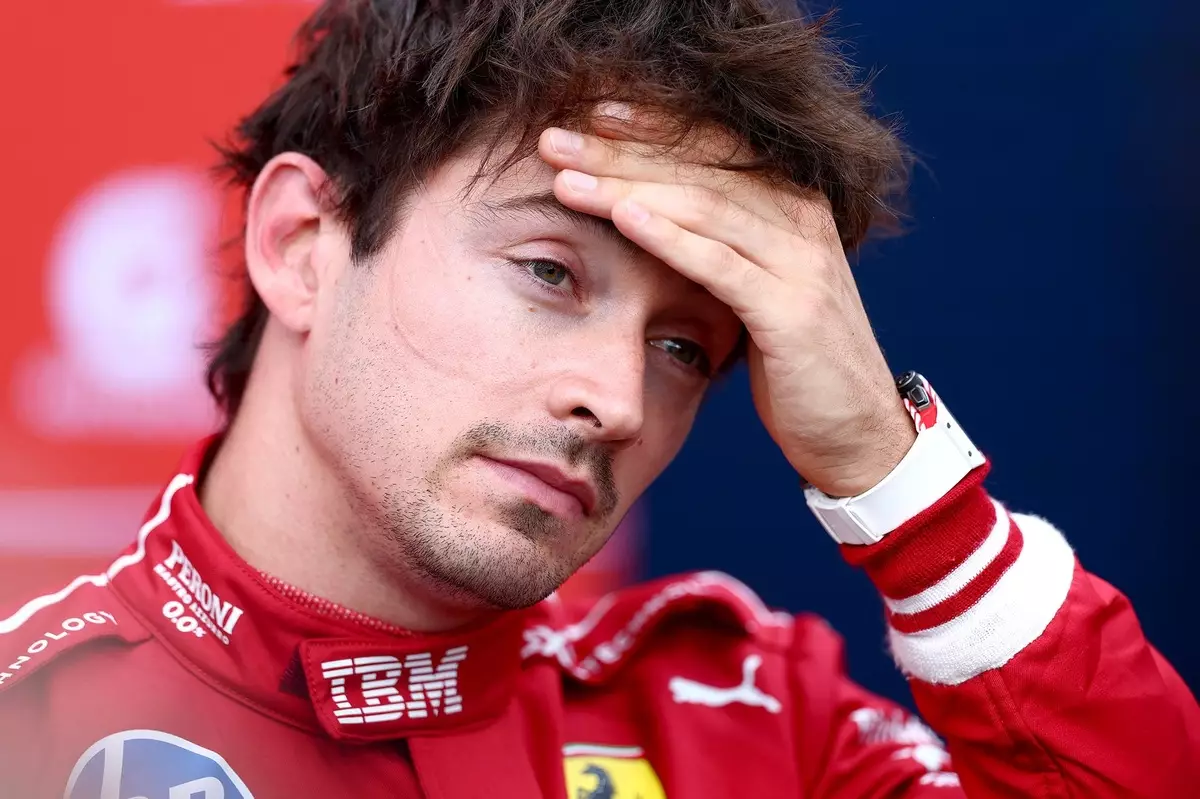In the high-stakes world of Formula 1, where milliseconds define destiny, Ferrari’s recent performances reveal a team caught in a cycle of fleeting brilliance and persistent mediocrity. The Belgian Grand Prix sprint race epitomized this pattern: an electrifying start followed by a slow, relentless erosion of position and hope. Despite the much-touted upgrades and relentless development, Ferrari’s cars continue to lag behind the dominant Red Bulls and resilient McLarens, revealing a fundamental struggle that extends beyond mere technical deficiencies. It’s a question of not just engineering, but of team strategy, mental resilience, and the capacity to translate potential into consistency.
Ferrari’s recent push to overhaul its car with significant upgrades—ranging from a new underfloor to revised suspension geometry—reflects a commendable effort to claw back against the sport’s existing hierarchy. However, the tangible gains remain elusive. The upgrades, while substantial on paper, seem to produce only marginal improvements in real racing conditions. This disconnect exposes a deeper issue: Ferrari’s inability to seamlessly extract maximum performance under variable race scenarios. The car’s underlying balance remains a concern, and the team’s efforts to calibrate it seem to fall short of creating a truly competitive package capable of fighting at the front regularly.
The Interplay of Skills and Strategy: Why Gains Are Still Not Enough
Charles Leclerc’s experience during the sprint race exemplified both the team’s potential and its limitations. His daring overtakes early in the race demonstrated the car’s speed and his individual talent. But this initial burst of heroics was painfully short-lived. As the laps extended, the Ferrari’s pace faltered, surrendering positions to more consistent opponents. Leclerc himself acknowledged that the car’s “maximum potential” felt within reach but ultimately still out of grasp, especially against teams like Red Bull and McLaren who are clearly executing more effectively.
Leclerc’s candid reflection underscores a painful reality: Ferrari is not yet a race-winning outfit, regardless of the upgrades. The team’s inability to maintain or improve performance through the race highlights a persistent fragility—one that cannot be fixed by modifications alone. It demands a holistic approach that incorporates driver skill, strategic finesse, and perhaps most critically, a culture of relentless self-assessment. The key question remains whether Ferrari’s technical developments are enough of a foundation—or if they’re just the surface of a deeper systemic issue that needs addressing.
Behind the Scenes: The Gambles and the Unseen Battles
The ongoing concept of upgrade packages adds a layer of complexity to Ferrari’s ongoing battle for supremacy. While the public is kept informed about notable modifications—be it the underfloor revisions or rear suspension tweaks—the actual impact on race performance is less straightforward. The subtle nature of these upgrades means that even drivers and engineers must decipher their efficacy through data and race-day experience, often revealing that improvements are marginal or situational.
Lewis Hamilton’s contrasting experience illustrates this well. His race from 18th to 15th, with a notably cautious start and limited overtaking, echoed Ferrari’s struggles as well. Hamilton’s comments about the upgrades and the DRS train reveal an underlying frustration: the race’s physicality and strategic bottlenecks can negate even the most well-crafted technical improvements. His mention of a rear-axle lock-up akin to one he encountered in Canada hints at persistent reliability and handling issues that hamper race craft and undermine confidence.
The conflicting narratives—drivers’ optimism about upgrades versus the harsh reality of race pace—highlight a team in a liminal space. Ferrari remains on the cusp of unlocking true performance, but the journey is marred by setbacks and misalignments between design intent and actual outcome. This disconnect is a harsh reminder that in Formula 1, innovations are only successful if they can be translated into consistent on-track results—a challenge Ferrari has yet to fully conquer.
The Road Ahead: A Critical Juncture for Ferrari’s Future
As the season unfolds, Ferrari’s narrative of hope versus reality becomes increasingly urgent. The technical ambitions are evident, and the team’s relentless pursuit of performance demonstrates a commendable commitment. But without a significant breakthrough—be it in aerodynamics, reliability, or strategy—Ferrari risks falling further behind its rivals, unable to capitalize on the talent of drivers like Leclerc and Sainz.
In essence, Ferrari’s current predicament is a stark lesson in the peril of overestimating technological fixes. Success in Formula 1 demands more than just impressive upgrades; it requires relentless iteration, clear strategic vision, and an unyielding drive to improve every aspect of their racing operation. For Ferrari, the battle isn’t merely against the other teams but against their own limitations—an internal fight that must be won with humility and a sharper focus. Only through such perseverance and introspection can Ferrari hope to emerge stronger from the shadow of their shortcomings and reclaim their rightful place at the pinnacle of motorsport.


Leave a Reply